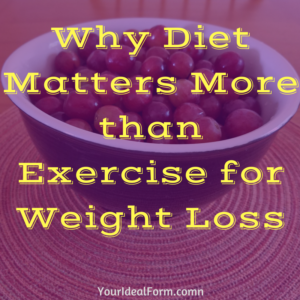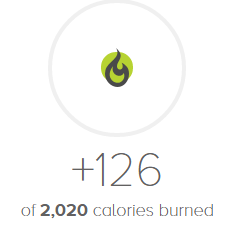
I’m sure you’ve heard the oft-cited statistic that diet is 70-80% of weight loss, and that exercise makes up the remainder. Let me explain why.
Earlier this year, I got myself a FitBit Blaze which has a built-in heart rate monitor. This means that by telling the app my height and weight, it bases my calorie burn throughout the day on that combined with my heart rate. This helps give me a much more accurate picture of my TDEE than just using a calculator alone. That said, the calculator I tend to use is really close to what my FitBit tells me.
The other data that I get from my FitBit is how many calories I burned during exercise, and how that compares to my total calories for the day. In the example below, I went for a one-mile walk and burned 126 calories. But that was just a smidgen of the 2020 calories I burned over the course of the entire day.

So where does the rest of that calorie burn come from? That’s where your basal metabolic rate (BMR) and Total Daily Energy Expenditure (TDEE) come from. BMR is how many calories your body burns just to keep you alive if you laid in bed all day. TDEE takes into account your average activity throughout the day, and includes things like calories burned to digest food, get dressed, walk to the coffee machine, bounce your leg up and down if you’re the fidgety type.
So you can see that very few of the calories I burned for the day are attributed to the exercise I did. Just over six percent. Most of my calories burned are based on my BMR. The only way to change your BMR is to increase your lean muscle mass through resistance training (either body-weight exercises or lifting weights). On the other hand, I consumed just over 1500 calories that same day. That comes out to about 74% of the calories I burned for the day. So you can see how changing how I eat can have a much greater impact on my weight than changing how much I exercise.
Which brings us back around to the weight loss equation. TDEE minus 500 calories each day equals weight loss of one pound per week. In order to burn off 500 calories, I would have had to walk five times as far. That would have been 5 miles, and it would have taken me nearly two hours at the pace I was going (which was, admittedly, somewhat leisurely). That is a lot of time and effort. It is far easier for me to simply cut 500 calories worth of food from my diet. If you drink your calories in the form of soda, energy drinks, alcohol or specialty coffees, the quickest way to cut those calories is to switch to water or a calorie-free version of your favorite drink. I get that it is difficult to go from a double shot mocha with whipped cream to black coffee, but if you can manage the swap, you can reach your goals so much sooner, and without feeling like you’ve had to completely sacrifice something.